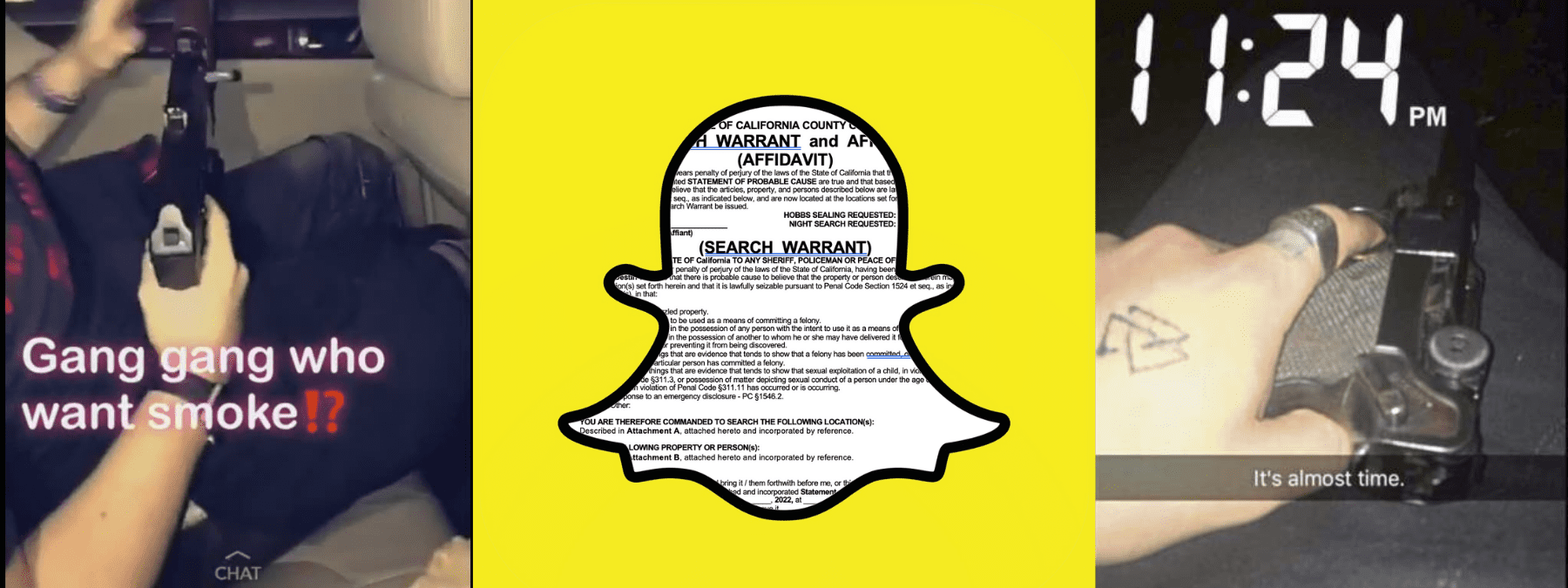
Snapchat is one of the most popular social media apps worldwide; with over 106 Million daily active users in the United States, Snapchat is likely to be a part of your criminal investigation.
Snapchat is a messaging platform and social network that users access through the mobile app and a computer’s internet browser. Users can chat with their friends by sending them photos or short videos that are up to 10 seconds long. Snapchatters overlay text on these photos and videos or communicate by simple text or by audio and video calls. Law Enforcement has encountered Snapchat used in crimes like narcotics, gangs, frauds and sexting. Snapchat has a reputation within law enforcement as being difficult to work with and a dead-end lead. This article will help explain Snapchat, what evidence can be collected, and why it’s worth writing a search warrant.
Snap Inc. is headquartered in Santa Monica, California and search warrants must be addressed to:
Snap Inc.
Attn: Custodian of Records
2772 Donald Douglas Loop
North Santa Monica, CA 90405
Requests that search warrants be served by digital upload to their law enforcement portal: less.snapchat.com
Poof! There goes my evidence.
One of the most unique things about Snapchat is its privacy features. Photos, videos, and unsaved text messages are automatically deleted a few seconds after they’ve been viewed by their recipients. Snapchat’s news feed feature is called “Stories” and let users post photos and videos that could be viewed by friends or the public rather than as a private or group message.
Snapchat record retention
What Snapchat keeps about their users is outlined in the Snapchat Law Enforcement Guide. Their record retention is listed below:
- Snapchat automatically deletes all Snaps after they’ve been viewed by all recipients.
- Snapchat deletes unopened one-on-one Snaps after 31 days.
- Snapchat deletes unopened Snaps sent to a Group Chat after 7 days.
- Snapchat deletes user Stories after 48 hours.
- SnapMap Public Stories are deleted based on user settings, but do not exist longer than 7 days.
What is in a username
Before a person can use Snapchat, they create an account consisting of personally identifiable information. The first stage of creating an account is selection of a unique username. This name cannot be changed and remains as the identifiable account name for the profile. A new user can additionally create a ‘vanity name’ which is capable of being modified and can contain emojis, symbols or other characters that are not allowed for the account username. Both the username and vanity name are visible to other Snapchat users, however, users commonly reference the vanity name when identifying a Snapchatter. Vanity names and usernames can pose investigative challenges and initial confusion when researching Snapchat accounts. When writing a Snapchat search warrant, it is important to note that they do not have the technical capability to locate accounts based upon vanity names.
Screenshot Notifications
Snapchat users are immediately notified if the recipients of their Snapchat messages, also known as “snaps”, try to take a screenshot of the snaps. Screenshots can indeed be captured if a user does it quickly and the sender is always notified about it right away. Despite this notification feature there exists several methods and apps that are capable to covertly saving snaps and bypassing this feature.
What can I collect with a Snapchat search warrant?
Despite being designed with user privacy in mind, there is quite a bit of evidence that Law Enforcement can collect with a search warrant. For California Law Enforcement , the California Electronic Communications Privacy Act (CalECPA) does apply to all Snapchat records. Snapchat evidence is divided into five primary categories:
Account Information
Account information is comprised of basic subscriber information like provided name, phone number and email address. Snap Inc. also records information about the devices used to connect to their service. As of July 2022, SnapChat can be access by a computer’s internet browser. Knowing what device(s) were used by a suspect can be especially useful in an investigation.
Communication Information
A SnapChat photo message is deleted from Snap Inc. servers as soon as it is deleted. It is still possible to collect the contents of undelivered snaps as long as the recipient’s device is not connected to the internet. SnapChat also has a simple text messaging feature. These are messages that are sent without photo or video attachments. These simple messages can be collected with a search warrant at anytime. Snapchat recently introduced audio and video calling features that work similar to Apple’s FaceTime calls. The calls are not recorded, but a search warrant can identify participants of the call.
Connections
Connection information is the closest thing that Snap Inc. has to friends lists. Connection Information will list those SnapChat users that the suspect communicated with, however there may not be a record of when they last connected.
Location Data
SnapChat loves knowing where their users are! Location evidence is the primary reason why Snapchat search warrants are written. Because the app needs a user’s location for geolocated SnapMap stories, the app always has access to a phone’s location services.
Customer Content
A SnapChat search warrant can collect the stored snaps, stories, and group chats. A search warrant can also collect “stickers” that the user has created and Bitmoji’s that the suspect has used.
You can learn more about writing search warrants for social media and technology in out Understanding Search Warrants series about Technology Search Warrants.
